CentOS Linux 7, the popular complimentary and open-source Linux circulation based upon Red Hat Business Linux, has actually set its end of life for June 2024 The business os, enjoyed by researchers, organizations and designers for its dependability, stability and security, has actually been a leading innovation for webhosting, cloud computing, storage servers, networks and software application advancement.
As users think about whether to move to CentOS Stream 9, a brand-new upstream circulation that is created to be a rolling release of Red Hat Business Linux and is ruled out a replacement for CentOS, other rivals stick out as excellent options.
Dive to:
Leading CentOS options: Contrast table
In the following chart, we keep in mind how 5 CentOS options compare in regards to efficiency, migration tools and resources, security and compliance, supported architectures, assistance and lifecycle, and rates.
| Efficiency | Migration tools and resources | Security and compliance | Supported architectures | Assistance and lifecycle | Prices | |
|---|---|---|---|---|---|---|
| Red Hat Business Linux | Extremely reputable and robust. | Yes. | Yes, integrated and automatic tools. | x86, ARM, IBM Power, IBM Z, IBM LinuxONE and more. |
24-7 assistance is complimentary with the paid strategy. 10-year lifecycle. Upgrade extensions readily available. |
Prices begins at $179. |
| Oracle Linux | Advanced efficiency and dependability. | Yes. | Yes, integrated tools. | x86 (32-bit), x86-64 (64-bit) and aarch64 (64-bit). |
24-7 assistance should be bought. 10-year lifecycle. Upgrade extension readily available. |
Free to download, utilize and disperse. Paid variations consist of Oracle Linux assistance, Oracle Cloud and Oracle. |
| Rocky Linux | Reputable however under extreme advancement. | Yes, however needs sophisticated understanding. | Yes, however needs sophisticated understanding. | x86-64-v2, ARM64, ppc64le and s390x. |
Neighborhood assistance and industrial assistance readily available. 10-year assistance and upgrade cycle. |
Free to download, utilize and disperse. |
| AlmaLinux | Enterprise-grade however under advancement. | Yes, however needs sophisticated understanding. | Yes, however needs sophisticated understanding. | x86_64, aarch64, ppc64le and s390x. |
Free neighborhood assistance. Upgrades and year-support lifecycle differ depending upon variations. |
Free to download, utilize and disperse. |
| Fedora | Business- grade, reputable and protected. | Yes, integrated sophisticated functions. | Yes, integrated, sophisticated functions. | x86-64, ARM, PowerPC: PowerPC64 and PowerPC64le, s390x and RISC-V: F. |
Online forums, files, bug programs, subscriber list and chat assistance. Supports upgrade from one variation to the next. |
Free to download, utilize and disperse. |
Included Partners
1
NinjaOne
NinjaRMM is NinjaOne’s effective user friendly RMM, providing all the functions, versatility, and power MSPs require in a fast-to-setup, easier-to-use plan. NinjaRMM provides you total exposure into and control over your Windows, Mac, and Linux servers, workstations and laptop computers in addition to virtual devices, and networking gadgets. Our centralized, policy-based management method puts automation at the center of your endpoint management technique. NinjaRMM is developed for the method MSPs work.
What are the very best CentOS options?
Because the IBM-owned business chose to limit the complimentary usage of Red Hat Business Linux, a divide has actually been growing amongst users. The primary concern is whether to move to industrial Linux suppliers or open-source, non-commercial community-developed business os.
In this complex landscape of impending migration, some leading names stick out as CentOS’s leading options: Red Hat Business Linux, Oracle Linux, Rocky Linux, AlmaLinux and Fedora.
Red Hat Business Linux: Finest for big business

The given name that becomes an option to CentOS is naturally Red Hat Business Linux, as it’s the open-source os on which CentOS is based. For that reason, numerous users believe that going straight to the source is naturally an excellent concept, and they’re not incorrect.
RHEL has actually acquired its track record amongst huge business for offering a modern-day, security-oriented OS. Business with sophisticated digital resources, innovation stacks and work utilize the OS to scale and carry out on-premises, on virtual devices or containers and in the cloud. The OS is licensed on numerous clouds and with countless software and hardware suppliers.
Figure A
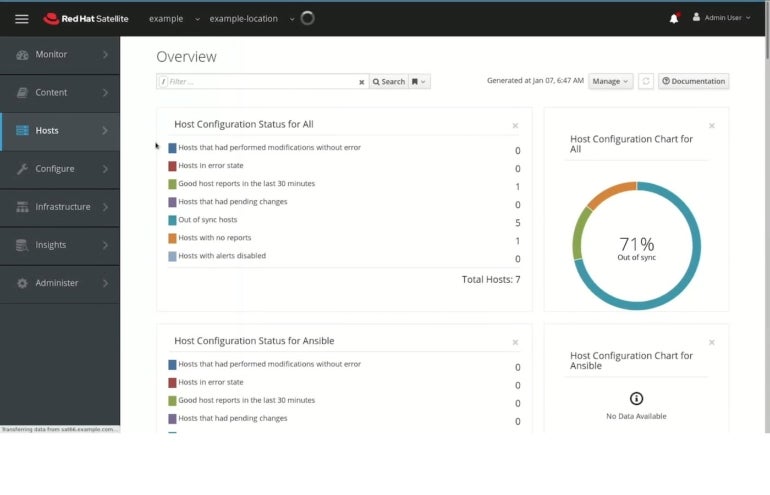
Functions
- Stability and neighborhood assistance: RHEL is an extremely steady OS created to be utilized in mission-critical environments. There is likewise a big and active neighborhood of RHEL users and designers to use assistance.
- Security: Security is at the core of RHEL. The system consists of a variety of sophisticated security functions.
- Main assistance and advantages: Red Hat offers 24/7 assistance for RHEL, and all variations have a 10-year life process. Plus, Red Hat links users with its comprehensive hardware, software application and cloud partner community.
- Supported architectures: It works on servers and workstations, and supports a wide variety of hardware architectures like x86, ARM, IBM Power, IBM Z and IBM LinuxONE.
- Automation and management: The OS consists of Red Hat Insights, a handled service for analytics and removal that provides constant vulnerability notifies and assistance.
- Security and compliance: RHEL can streamline threats and automate security and compliance with integrated functions like live kernel patching, security profiles, security requirements accreditation and a relied on software application supply chain.
- Migration: From setting up to moving or upgrading, the supplier uses tools to enhance the procedures, whether users are originating from CentOS Linux or another OS.
Pros
- Steady and reputable software application.
- High-performing security and compliance.
- Well-supported OS.
- Wide variety of functions.
- Big and active neighborhood.
Cons
- Not complimentary; industrial rates can be pricey for little business.
- Can be complicated to handle.
- Not as versatile as some other Linux circulations.
Prices
RHEL variations consist of the Server edition and RHEL Workstations, which are enhanced to work on high-performance workstations. In addition, other variations are Linux for Virtual Datacenters, Linux for IBM Power Little Endian and Linux for SAP Solutions
Prices begins at $179 for the Workstation, and the most pricey service, Linux Virtual Datacenters, begins at $2,499.
SEE: For more details, read Red Hat Business Linux 9
Oracle Linux: Finest for IT and software application advancement business
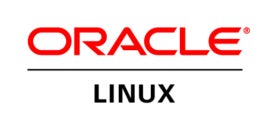
Oracle Linux is another strong option for those wanting to move from CentOS for numerous factors. First off, Oracle Linux is 100% Red Hat Business Linux suitable. It can deal with a variety of work, durable databases, application servers and DevOps. In addition, users can move from CentOS to Oracle Linux effortlessly utilizing integrated migration functions. And, they will take advantage of numerous functions that are not readily available in CentOS.
Totally suitable with RHEL, Oracle uses an option of 2 kernels: the Unbreakable Business Kernel for Oracle Linux or the Red Hat Compatible Kernel.
- The Unbreakable Business Kernel offers the current open source developments, essential optimizations and security with a concentrate on efficiency, stability and very little backports by tracking the mainline source code as carefully as is useful. It is a Linux kernel developed by Oracle and supported through Oracle Linux assistance. UEK is created for optimum efficiency and stability and drives Oracle Cloud and Oracle Engineered Systems, such as Oracle Exadata Database Device. UEK is well-tested and utilized to run Oracle’s Engineered Systems, Oracle Cloud Facilities and big business releases for Oracle consumers.
- The Red Hat Compatible Kernel is for Oracle Linux, and it works with the Red Hat Business Linux kernel; this implies that software application that is put together for RHEL will likewise work on Oracle Linux with RHCK.
Oracle Linux is an excellent option for organizations and companies that require a steady, reputable and protected os. It is likewise popular amongst IT and software application business due to the fact that of the functions noted below.
Figure B
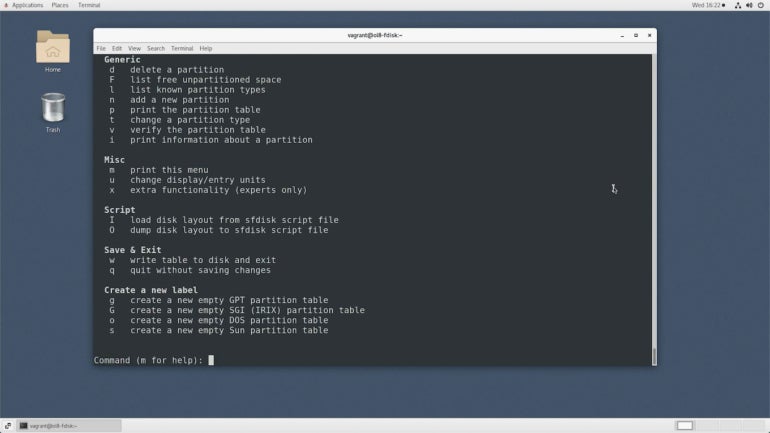
Functions
- Migration: Oracle offers a fast and simple migration course to change from CentOS Linux or other OS. The business likewise uses hands-on laboratories and tutorials to assist users throughout the procedure.
- DevOps automation: IT business and software application designers utilize the automatic DevOps functions to speed up production and implementation. Through these functions, Constellation Research study users can discover 5 motorists for DevOps automation, suggestions and more.
- Multi-environment efficiency and dependability: Oracle Linux is created to support x86 and Arm architectures throughout on-premises, multicloud and edge environments. It is likewise crafted for heavy work.
- Security and compliance: Users can use security vulnerability repairs without downtime. Oracle Linux can assist users find exploits and utilize a circulation that has FIPS and Typical Requirement accreditations to fulfill compliance.
- Main assistance: Oracle Linux assistance need to be bought. The rate for the 24/7 assistance begins at $499 each year.
Extra functions that are not readily available in CentOS consist of:
- Zero-downtime covering with Ksplice.
- Cloud-native tools such as Kubernetes and Kata Containers.
- Kernel-based virtual maker virtualization and oVirt-based virtualization supervisor.
- Gluster Storage for Oracle Linux.
- The Btrfs file system (just readily available with UEK).
- DTrace vibrant tracing structure (just readily available with UEK).
- Oracle Linux Automation Supervisor and Automation Engine.
- Oracle Linux Supervisor energy to help in patching and errata management.
Pros
- Uses complimentary download, usage and circulation.
- Boasts high-performance, stability, security and dependability.
- Offers automation for DevOps.
- Provides exceptional assistance.
- Uses a wide variety of functions that CentOS does not.
- Consists Of a 100% RHEL suitable migration course for CentOS and other OS users.
Cons
- Assistance need to be bought.
- Can be complicated to handle.
- Compliance includes need sophisticated understanding.
Prices
Oracle Linux fundamental variation is complimentary to download, utilize and disperse; this consists of complimentary source code and updates. The Oracle Cloud Facilities rates can be approximated online and the Linux Assistance strategy rates is readily available upon demand.
SEE: Is Oracle Linux a legitimate replacement for CentOS? (TechRepublic)
Rocky Linux: Finest for die-hard CentOS fans

Rocky Linux is a community-supported Linux circulation that was developed when CentOS revealed its end-of-life cycle. The job is led by the initial creator of CentOS, Gregory Kurtzer.
The OS is created to be a drop-in replacement for CentOS. It reacts to the requirements of the CentOS neighborhood and has actually gotten assistance from Amazon Web Provider, Google Cloud, VMware, Open Source Laboratory and others.
Rocky Linux is an open-source business os created to be 100% bug-for-bug suitable with Red Hat Business Linux; nevertheless, as it is under extensive advancement by the neighborhood, it is not yet safe.
Figure C
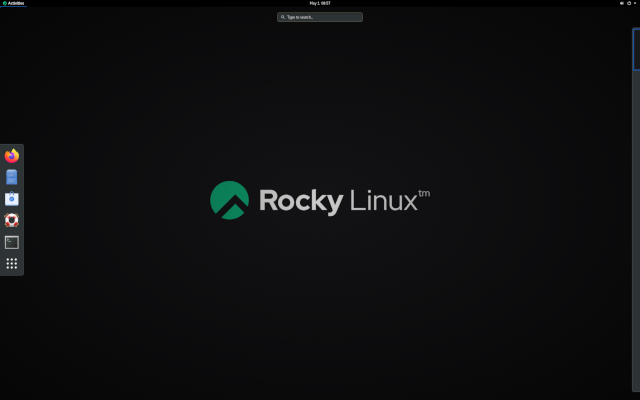
Functions
- Migration: Rocky Linux uses assistance and guides for users to utilize when moving from CentOS, CentOS Stream, Alma Linux, RHEL or Oracle Linux. Advanced abilities are needed for the migration and what Rocky Linux calls “a slightly risk-taking mindset.” A migration script is readily available complimentary of charge.
- Production-ready: Regardless of it still being under advancement, the OS is enterprise-ready and offers strong stability with routine updates.
- Neighborhood assistance: The OS has the assistance of widely known CentOS leaders, in addition to the broader neighborhood.
- CentOS functions: The OS offers all the primary CentOS functions that designers and the neighborhood recognize with, making the discovering curve a straight line.
SEE: Find out to utilize Linux for IT and Sysadmin with this training package ( TechRepublic Academy)
Pros
- Free and open-source.
- Reputable and protected.
- Well-supported.
- Outstanding for users acquainted with CentOS.
- Supported by the CentOS active neighborhood.
Cons
- Under extreme advancement.
- Not safe.
- Needs sophisticated understanding.
Prices
Rocky Linux is complimentary and offers complimentary upgrades in addition to a 10-year assistance lifecycle, all at no charge.
AlmaLinux: Finest for those acquainted with CentOS
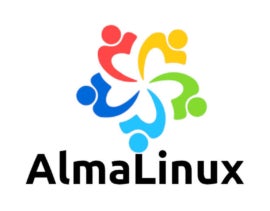
AlmaLinux is another forked variation of CentOS, owned and governed by a neighborhood of designers. Like RockyLinux, the OS started advancement when CentOS revealed it would no longer use assistance or launch brand-new variations.
The neighborhood behind AlmaLinux ensures that the OS will constantly be complimentary for business, which they are concentrated on long-lasting stability and a robust production-grade platform. The business embraced a Fedora-like circulation for anybody who does not wish to spend for RHEL licenses. AlmaLinux is supported by CloudLinux Inc. and other sponsors.
Functions
- Migration: AlmaLinux does not have integrated automatic detailed innovation that guides users through migration. AlmaLinux does use guides, however just those with sophisticated abilities will have the ability to follow them ( Figure D).
- Production-ready: AlmaLinux OS is an enterprise-grade server OS. It is a steady Linux circulation and uses routine releases and assistance. It is created for vital work. The company offers main images for cloud suppliers consisting of AWS, generic clouds, Google Cloud, Microsoft Azure, OpenNebula and Oracle Cloud Facilities.
- Neighborhood assistance: The AlmaLinux GitHub company consists of source code and tools utilized to construct AlmaLinux OS and associated facilities. The Reddit neighborhood remains in location for users to get updates and discover and supply assistance. In addition, other neighborhood online forums are readily available.
- Supported architectures: AlmaLinux supports 4 architectures: x86_64, aarch64, ppc64le and s390x.
- Efficiency and security: AlmaLinux is an extremely steady os that depends on the proficiency of specialists in the neighborhood. It is created to be utilized in mission-critical environments, and it has a long history of dependability. It likewise offers a variety of security functions, that include SELinux and AppArmor.
Figure D
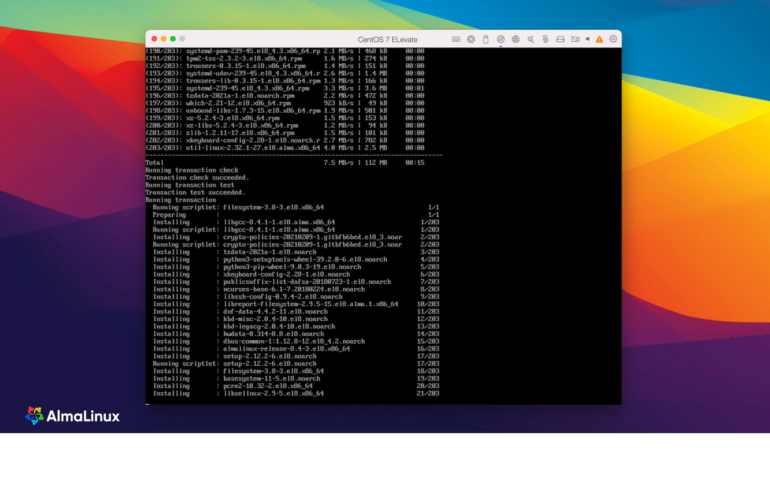
Pros
- Open-source and complimentary.
- Migration assistance.
- Top-quality business circulation OS.
- CentOS-style functions.
- Big neighborhood assistance.
Cons
- New to the marketplace.
- Not safe.
- Needs sophisticated understanding.
- Advanced tools such as automation and compliance might differ and depend upon the level of user proficiency.
Prices
AlmaLinux is complimentary. Upgrades and assistance offered differ depending upon the variation.
Fedora: Finest for shows and rolling release circulation

Fedora is an ingenious platform enjoyed by developers due to the fact that it offers innovative innovation, is reputable and steady, and is a totally free and open-source OS loaded with functions.
Fedora is likewise a community-supported Linux circulation established by Red Hat. In idea, it compares more to CentOS Stream than to CentOS due to the fact that it uses rolling release circulation, offering users access to the current innovation. New functions and updates are launched on a constant basis. The brand-new functions in Fedora are readily available prior to they are launched in Red Hat Business Linux. Fedora likewise invests greatly in graphic user experience and offers user friendly, top quality graphics through contemporary desktops ( Figure E).
Figure E
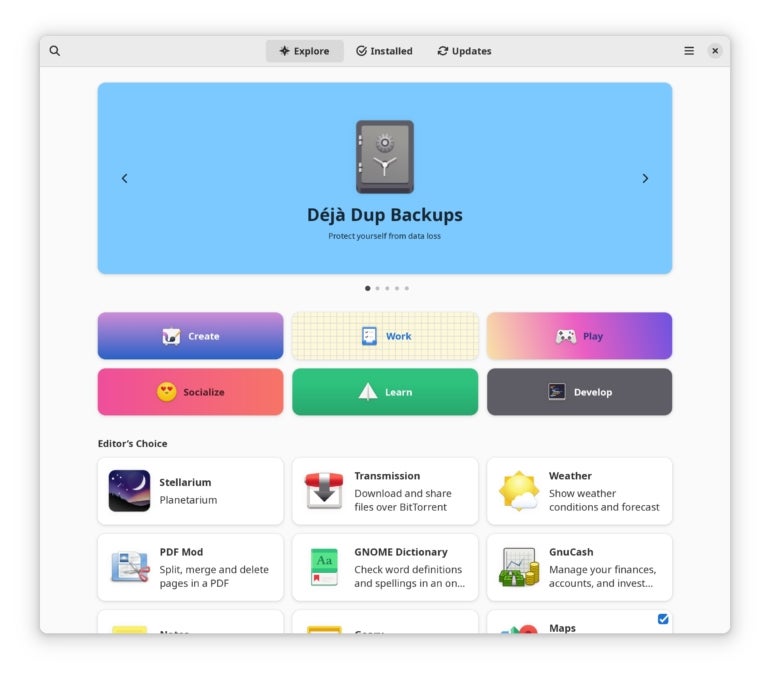
Functions
- Variations: Fedora is readily available in Workstation and Server variations in addition to for IoT, Cloud and as a Container enhanced OS. Each variation is upgraded for roughly 13 months; upgrades in between variations fast and simple.
- Efficiency: With Fedora Server, users can run virtual devices and containers, construct applications, release a server and work, and produce steady environments.
- Assistance: Offers problem tracking, chat assistance, resources, documents, neighborhood assistance and more.
- Rolling releases: Fedora is a rolling release circulation, which implies brand-new functions and updates are launched on a constant basis. Users have access to the current software application readily available.
- Supported architectures: x86-64, ARM, PowerPC: PowerPC64 and PowerPC64le, s390x and RISC-V: F.
Pros
- Free and open source.
- Integrated migration tools and resources.
- Advanced os, uses rolling releases.
- Neighborhood supported.
Cons
- Advanced abilities are needed.
- Setup can be complicated.
Prices
Fedora is complimentary and offers complimentary upgrades from variation to variation.
Is CentOS still appropriate?
CentOS is still an appropriate Linux circulation regardless of it being on the countdown for its end of life. You might consider CentOS as a great automobile that the maker is no longer producing. While you can still utilize the automobile and it works completely, you will not get upgrades, brand-new variations or assistance. In the future, it is anticipated to end up being out-of-date.
Will there be a CentOS 9?
No, there will not be a CentOS 9. Red Hat revealed it would no longer support CentOS as a downstream circulation of RHEL. This implies there will be no brand-new variations of CentOS launched after CentOS 8.
Nevertheless, led by a big neighborhood and supported by industrial partners, forks of CentOS such as Rocky Linus and AlmaLinux are being established. These forks are created to be 100% suitable with CentOS, so they can be utilized as a drop-in replacement for CentOS.
Is CentOS excellent in 2023?
While CentOS in 2023 is still an excellent alternative, designers and organizations are currently checking out moving to other options.
Having stated that, CentOS is still steady, reputable and suitable with a wide variety of software application in 2023. It is likewise still complimentary and open-source, and has the assistance of an active neighborhood of users and designers. Nevertheless, due to completion of CentOS as we understand it, it might not be the very best option for everybody in 2023 and beyond.
What is the future of CentOS?
While the future of CentOS doubts, the most likely circumstance is that a person of the companies establishing forks of it ends up being the go-to OS for this neighborhood by mid-2024 when it reaches its end of life.
On the other side, from Red Hat’s point of view, the future of CentOS is CentOS Stream, which is a brand-new Linux circulation established by Red Hat, an IBM-owned business. However CentOS Stream is not a replacement for CentOS– it is a various circulation with a totally various focus. It intends to be at the leading edge of advancement by providing users rolling release circulation to check brand-new functions and updates prior to they are launched in RHEL. In this method, it resembles Fedora; likewise, both are established by Red Hat, and both deal rolling releases.
How do I select the very best CentOS option for my company?
There is no simple response to this concern. When selecting an option for CentOS, magnate need to talk to their designers to discover which OS they feel more comfy with due to the fact that they will be the ones running the system.
On the other hand, spending plan might be a choosing element, specifically for little business. In addition, amongst CentOS users and designers, there is a strong sense of neighborhood, assistance and regard totally free open-source jobs. For that reason, even if a business has the spending plan to purchase the most pricey licenses, designers might feel more positive and comfy dealing with open-source, complimentary innovation.
Some users might see completion of life of CentOS as a chance to move to another OS such as Oracle Linux or Red Hat Business Linux. These more conservative options use functions that CentOS does not use.
In the end, the OS you select need to line up with your company requirements and objectives, be versatile, reputable and protected, and supply outstanding migration and assistance. Scaling, automation, upgrades and compliance are likewise essential parts to evaluate.
Conclusion
CentOS has actually offered important services for companies, business and designers for several years. While the OS deals with the inescapable end of its magnificence days, there are still strong brand-new and recognized Linux OS circulations in the market.
From CentOS-inspired neighborhood OSs like Rocky Linux or AlmaLinux, to an advanced OS like Fedora, or the huge names of Oracle and Red Hat Linux, the alternatives are as varied as they are abundant. It will depend on every company to choose which Linux circulation fits their functional requirements.
Method
To compose our evaluation and examine CentOS rivals and options, we analyzed websites that assemble aggregate information based upon validated user evaluations. We likewise examined demonstrations on supplier websites, test-drove the software application when possible and searched through the main websites of all OS suppliers’ functions in this report to examine their software application, client service, user-friendliness, rate, scalability and more.
